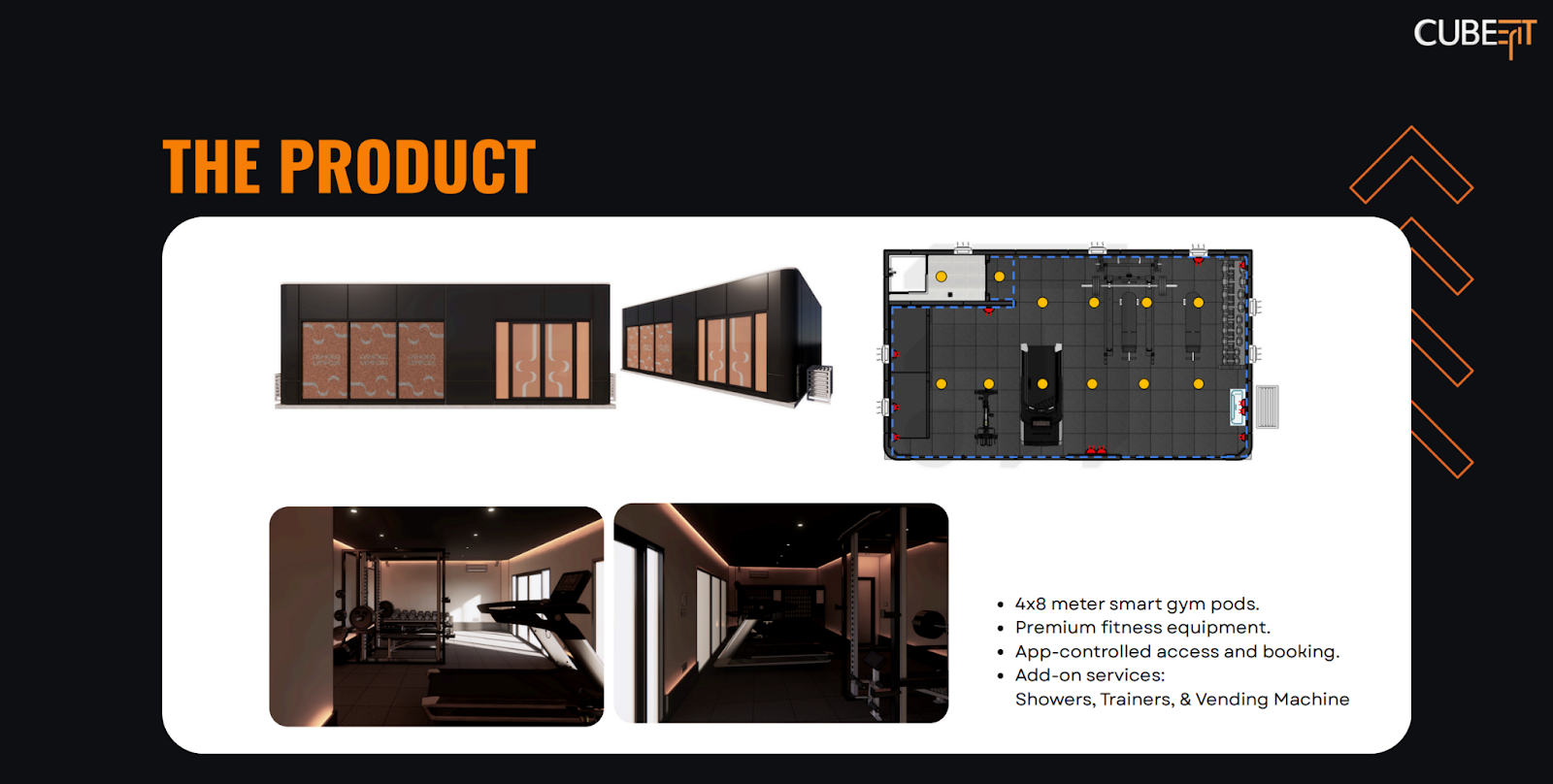.jpg)
I entered the fitness and wellness industry not as a seasoned fitness professional, but as a consumer who was struggling with the same problem my customers face today. My schedule was packed — back-to-back meetings, long commutes, constant traffic. Fitness was always the first thing to be sacrificed.
I realized this wasn’t just my problem — it was the reality for millions of urban professionals. That insight became the starting point for CubeFit. I wanted to create a solution where working out could be as easy and convenient as picking up a coffee on the way to work.
CubeFit is designed to solve three key challenges:
First, time scarcity. Our pods are accessible 24/7 and located where people already spend their time — near offices, residential buildings, malls, and transit hubs. The sessions are short and efficient, often 30 minutes or less.
Second, privacy and hygiene. Crowded gyms aren’t appealing for everyone, especially post-pandemic. Each CubeFit pod is private, smart-controlled, sanitized automatically, and has air purification built in.
Third, motivation and personalization. Through our mobile app, users can book sessions, track their progress, receive AI-powered workout recommendations, and integrate with their wearables for a more connected experience.
What makes CubeFit unique is the combination of physical innovation — our smart, modular pods — and a connected digital experience.
We’re not just offering a gym membership; we’re creating an ecosystem for micro-fitness tailored to the pace of urban life. Unlike traditional gyms or expensive home equipment, CubeFit offers on-demand privacy, scalable deployment, and a franchise-friendly model.
This hybrid approach gives us the agility to scale quickly in dense urban environments and the ability to serve customers exactly where they are.

I believe fitness should be frictionless — something you can fit into your life without sacrificing time, comfort, or confidence.
My personal mission is to make wellness accessible in the real world — without intimidation, without unnecessary barriers. I want people to reclaim their health on their own terms.
CubeFit is more than a business for me. It’s a movement to redefine what it means to live well in modern cities. We’re starting in Indonesia, but the goal is to bring this vision to cities around the world.
I searched intentionally for co-founders who shared not only the vision for CubeFit but also the values behind it. I wanted people who cared about creating both impact and opportunity — not just building a product.
Through networks, coffee chats, and honest conversations, I found partners who believe CubeFit should be a force for good: creating jobs, supporting small franchise owners, and making health accessible.

I see a strong shift toward hyper-personalized, time-efficient, and tech-enabled fitness. People want fitness to adapt to their lifestyles — not the other way around.
The on-demand culture, from food delivery to streaming, has changed expectations everywhere. Now, fitness needs to be flexible, contactless, and controllable from your phone.
There’s also an increased focus on hygiene and mental wellness, especially post-pandemic. Users want safe, private, empowering fitness experiences. At the same time, Gen Z and Millennials are redefining fitness as part of a broader lifestyle — it’s about resilience, stress management, and balance, not just physical appearance.
Finally, the rise of micro-location fitness and modular infrastructure is a game-changer in crowded, high-cost urban markets. CubeFit was designed with all of these trends in mind.
Yes. Beyond individual users, we are actively exploring B2B partnerships, including corporate wellness programs and government collaborations. Currently, we are in discussions with a local government interested in acquiring at least 20 CubeFit units as public fitness facilities. This approach not only opens a high-volume sales channel but also positions CubeFit as a community wellness solution, not just a private fitness option.
Our strategy combines cost efficiency and strategic partnerships. By collaborating with vendors as strategic partners, we can secure premium-grade equipment and materials at reduced costs. The CubeFit design is modular, making it efficient to produce, maintain, and scale without compromising quality. This allows us to deliver a premium, tech-enabled fitness experience at a price point accessible to a broader market.
In five years, I want CubeFit pods to be as common in Southeast Asia’s cities as ATMs or coffee kiosks — on sidewalks, in malls, near offices, in transit hubs.
Beyond the pods, CubeFit will evolve into a connected wellness ecosystem. Our app will integrate AI-driven personalization, biometric tracking, mental wellness tools, and social fitness challenges.
We also aim to make our pods energy-efficient, solar-powered, and recyclable — because sustainability is part of wellness too.
Ultimately, I see CubeFit becoming a global movement that proves you don’t have to choose between a busy life and a healthy one.
Markets in Southeast Asia such as Singapore, Malaysia, and the Philippines are highly promising due to their dense urban populations, limited space for traditional gyms, and strong adoption of tech-driven lifestyle solutions. CubeFit’s compact, fully-equipped, and smart-controlled design addresses these urban challenges while catering to the growing demand for flexible fitness experiences.
The franchise model is designed for centralized operational control with localized execution. All CubeFit units are monitored via a central control room at our headquarters, ensuring operational consistency. Franchisees are responsible for on-site cleanliness and customer service, supported by our strict operational SOPs. Quality audits, regular training, and a live monitoring system help us maintain the same high standards across all locations.
We are currently seeking pre-seed funding to develop our first working prototype and MVP application. This round will allow us to launch pilot operations, validate our business model, and prepare for rapid scaling. While CubeFit is a new venture, our team has prior experience in launching and managing service-based businesses. We have already secured two signed franchise commitments and are in negotiations for a large-scale government partnership—traction that we believe strengthens our case for investment.
Our biggest challenge right now is proving the vision before the full infrastructure exists. We have strong interest and even franchise inquiries, but building a physical product like our pods requires capital, prototyping, and logistics.
We’re also educating the market on a new habit: thinking of fitness as something available on-demand, in the spaces people already frequent.
It’s a balance of moving fast enough to seize the opportunity, while building something exceptional that people will love from day one.
I would have focused earlier on deeply understanding one specific target customer before trying to serve multiple segments. Once we focused on urban professionals with demanding schedules, everything clicked.
And I would definitely start by building the right team from day one. In the early days, I tried to do everything myself — product design, marketing, operations. It slowed us down and drained my energy. People are everything!

Check out the profile to see their latest milestones and subscribe to stay in the loop with all their updates!
Inspiring founder stories you can’t miss!